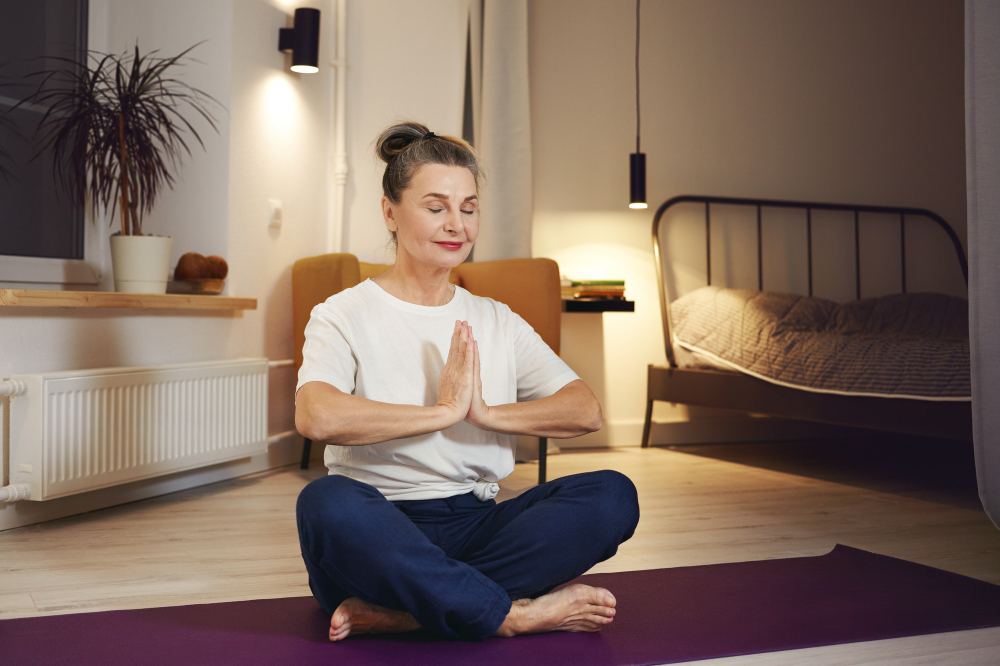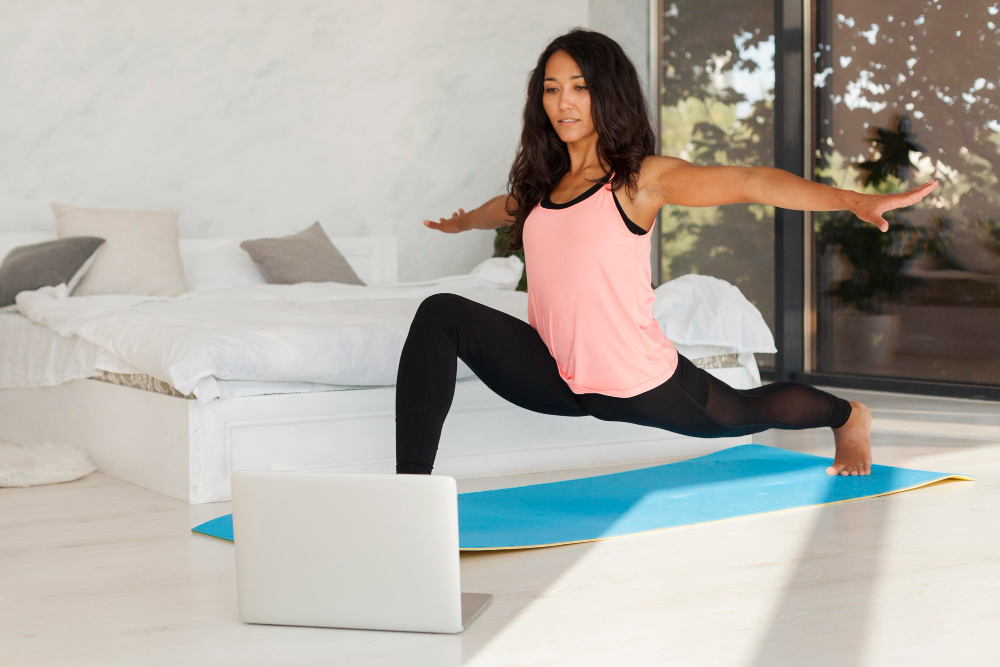8 Tips on How to Do Yoga at Home

Are you looking to start or enhance your yoga practice right in the comfort of your home? This article offers eight essential tips to help you establish a rewarding London yoga routine without stepping out of your door. Keep reading to transform your living space into a serene yoga haven.
1. Create a Dedicated Space for Your Practice
- Finding the Right Spot: The first step in your home London yoga practice is to carve out a dedicated space. It doesn’t have to be large; a quiet corner where you can roll out your mat is perfect. Ensure it’s a place where distractions are minimal, allowing you to focus and immerse fully in your practice.
- Making It Yours: Personalize this space with items that inspire tranquility and focus. This could be a few potted plants, candles, or anything that brings you peace. The aim is to create an environment in which you look forward to spending time, making your yoga practice something you cherish.
2. Invest in Quality Yoga Equipment
- Choosing the Right Mat: A good yoga mat is foundational for a solid home practice. Look for an adequate grip and cushioning to support your body and prevent injuries. Quality mats provide stability during poses, enhancing your London yoga experience.
- Additional Tools: Consider investing in a few more pieces of equipment, such as yoga blocks and a strap. These tools aid in deepening your stretches and maintaining proper alignment, which is especially important when practicing without a teacher’s immediate guidance.
3. Set Realistic Goals and a Routine
- Goal Setting: Define clear, achievable goals for your London yoga practice. Whether it’s improving flexibility, building strength, or enhancing mental clarity, setting goals keeps you motivated and directs your practice.
- Establishing a Routine: Consistency is key. Determine a schedule that works for you and stick to it. Morning may be ideal for some, setting a positive tone for the day, while others prefer the evening to unwind before bed. Whatever you choose, consistency will make your practice a regular part of your life.
4. Use Online Resources Wisely
- Finding Guidance: The internet is awash with London yoga tutorials, apps, and online classes. Select resources that align with your goals and skill level. Find reputable instructors with clear instructions and focus on form to prevent injuries.
- Limitations and Variety: While online resources are invaluable, remember they are a guide, not a one-size-fits-all solution. Diversify your sources to keep your practice fresh and cover different aspects of yoga, such as pranayama (breath work), meditation, and various asana (pose) sequences.
5. Listen to Your Body
- Understanding Limits: One of the most important aspects of practicing yoga at home is learning to listen to your body. Without a teacher present to offer adjustments, it’s crucial to be mindful of your limits to avoid overstretching or strain.
- Adapting Practices: If a pose feels uncomfortable, don’t force it. Instead, use modifications or props to find a variation that works for you. This approach ensures a safe practice that respects your body’s needs and limitations.
6. Incorporate Meditation and Mindfulness
- Starting with Stillness: Begin and end your London yoga sessions with a few minutes of meditation or mindfulness. This practice centers your mind, setting a purposeful intention for your session and allowing you to conclude with a moment of gratitude.
- Deepening Awareness: Integrating meditation and mindfulness enhances yoga’s mental benefits, promoting stress relief and emotional well-being. It transforms your practice from physical exercise to a holistic experience that nurtures mind and body.
7. Join an Online Community
- Finding Support: Engaging with an online London yoga community can provide encouragement, advice, and a sense of connection. Many platforms offer forums where yogis share experiences, challenges, and successes. This can be particularly motivating when practicing alone at home.
- Sharing and Learning: Don’t hesitate to ask questions, share your progress, and participate in challenges. Learning from others’ experiences enriches your practice and can introduce new perspectives and techniques to your routine.
8. Reflect on Your Practice
- Keeping a Yoga Journal: Documenting your London yoga journey helps track progress, reflect on learning, and set future goals. Note the poses you find challenging, insights from your practice, and how you feel physically and mentally after each session.
- Evolving Your Practice: Use your reflections to adjust your goals and routine as needed. This ongoing process ensures your practice remains aligned with your evolving needs, keeping it relevant and rewarding.
Conclusion
These eight tips can significantly enhance your London yoga practice at home. Remember, the key is consistency, mindfulness, and patience with yourself as you grow in your practice. Yoga is a personal journey that unfolds differently for everyone, so embrace your unique path.
We invite you to engage further by commenting below with your experiences or questions. Share this post with friends who might be embarking on their own yoga journey, or explore our range of yoga products designed to support your practice.
We’ve got you covered whether you’re looking for the perfect mat, comfortable clothing, or insightful books. Join us in fostering a vibrant community of home-based yogis dedicated to well-being and personal growth.
Read More:
Yoga at Home for Beginners
Related Posts

Excel in Online Yoga Classes

Achieving Radiant Skin with The Hot Yoga Glow
About Us


